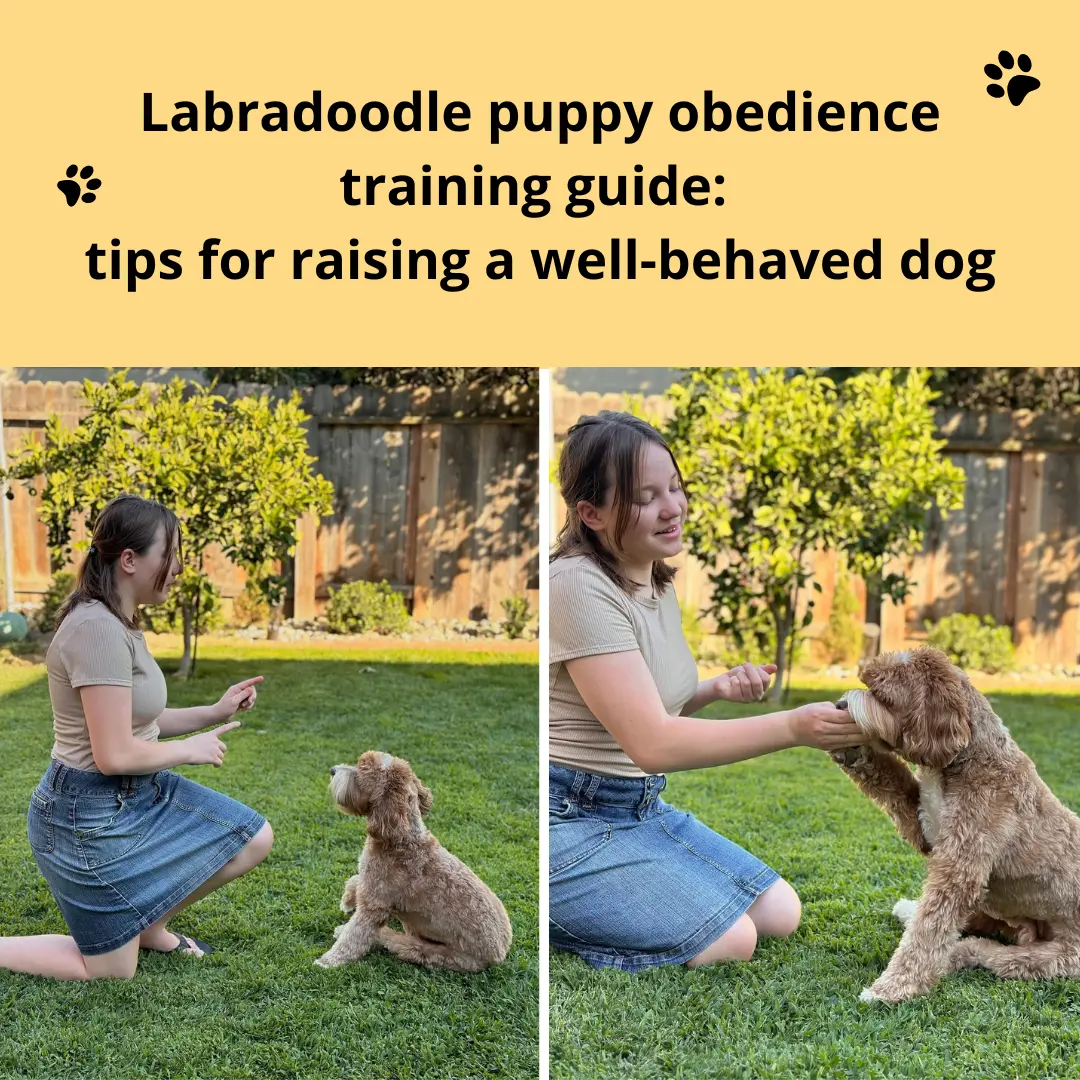Training a new Labradoodle puppy can be exciting but also a little overwhelming. These intelligent, affectionate dogs inherit traits from both the Labrador Retriever and the Poodle, making them quick learners who sometimes test boundaries. That’s why a structured Labradoodle puppy obedience training guide is essential. Following it helps build good habits, ensures safety, and strengthens the bond between you and your pup.
This guide provides practical steps, expert advice, and actionable tips to make Labradoodle obedience training effective and enjoyable.
Why Early Puppy Obedience Training Matters
Starting training early is critical for Labradoodles. Their energy and intelligence make them highly trainable—but also prone to picking up unwanted behaviors. Consistent puppy obedience training teaches boundaries, reinforces commands, and helps your Labradoodle adapt to different situations.
Without guidance, a Labradoodle may develop issues like excessive barking, jumping on guests, or pulling on the leash. A proper Labradoodle training guide sets the stage for a well-mannered adult dog.
Core Principles of Labradoodle Training
Successful Labradoodle puppy training relies on a few key principles:
- Consistency – Use the same commands and reward system each time.
- Positive Reinforcement – Labradoodles respond best to praise, treats, and encouragement rather than scolding.
- Short, Fun Sessions – Keep training between 10–15 minutes to maintain focus.
- Patience – Every puppy learns at their own pace; celebrate small wins.
These foundations make the obedience guide easier to follow and more effective.
Essential Commands with Practical Tips
A solid Labradoodle puppy obedience guide covers basic commands. Here’s how to teach them:
- Sit – Hold a treat above your puppy’s nose, move it back over their head, and say “sit.” Reward immediately when they obey.
- Stay – Ask your puppy to sit, hold your palm out, say “stay,” and step back slowly. Gradually increase distance.
- Come – Use a happy voice, crouch, and say “come” while showing a treat. Reward as soon as they reach you.
- Down – From a sitting position, move a treat to the floor, guiding your puppy into a lying position. Reward instantly.
- Leave it – Hold a treat in both hands, show one closed fist, and say “leave it.” Reward only when the puppy ignores the closed fist.
These commands build the foundation for a well-behaved dog in daily life.
Crate and House Training Tips
No Labradoodle puppy training guide is complete without house training. Labradoodles usually learn quickly, but consistency is key.
- Crate training – Use a crate as a safe space, never as punishment. Puppies naturally avoid soiling their sleeping area.
- Bathroom routine – Take your pup outside after meals, naps, and playtime. Reward successful bathroom trips.
Within weeks, your Labradoodle will understand where and when to relieve themselves.
Socialization: A Key Component
Early socialization is vital. Introduce your puppy to different people, pets, sounds, and environments. This helps prevent fear, anxiety, and aggressive behavior.
Consider enrolling in a puppy obedience class. Group sessions reinforce commands while exposing your Labradoodle to controlled social interactions.
Leash Training Made Easy
Many Labradoodles pull on the leash due to high energy. Start leash training indoors with a harness or collar. Practice short walks, rewarding your puppy for staying by your side. Gradually increase duration and distractions. Over time, your Labradoodle learns that calm walking brings more exploration and fun.
Overcoming Common Training Challenges
Even with a detailed obedience guide, some issues may appear:
- Jumping on people – Redirect to a sit or down command, reward compliance.
- Biting/nipping – Provide chew toys, stop playtime when biting occurs.
- Distraction – Gradually train in more stimulating environments to strengthen focus.
Consistency and positive reinforcement make these challenges manageable.
When to Seek Professional Help
If your puppy struggles despite following a Labradoodle puppy training guide, a professional trainer can offer personalized strategies. Experts are especially helpful for behavioral issues like separation anxiety or excessive barking. Professional classes complement home training for balanced results.
Final Thoughts
Raising a Labradoodle is a joyful and rewarding journey. Following a structured Labradoodle puppy obedience training guide ensures your pup develops into a well-behaved, happy companion. Focus on consistency, positive reinforcement, early socialization, and patience, and you’ll enjoy a loyal, energetic, and affectionate dog for years to come.



